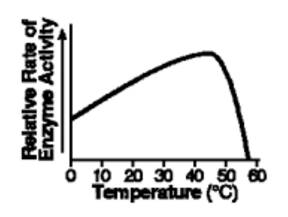
Action of Salivary Amylase on Starch
Assessment
•
Saiful Milah
•
Science
•
8th Grade
•
92 plays
•
Medium
Improve your activity
Higher order questions
Match
•
Reorder
•
Categorization
.svg)
actions
Add similar questions
Add answer explanations
Translate quiz
Tag questions with standards
More options
11 questions
Show answers
1.
Multiple Choice
What is the meant by optimum temperature for enzyme activity?
The temperature at which the enzyme deactivated.
The temperature at which the enzyme denaturated.
The temperature at which the enzyme shows the maximum activity.
The temperature at which the enzyme shows the minimum activity.
2.
Multiple Choice
The digestion of food starts at the ______.
Alimentary Canal
Intestine
Stomach
Mouth
3.
Multiple Choice
The optimum temperature for the enzymatic activity of salivary amylase ranges from ______ to ______.
32 °C to 37 °C.
5 °C to 10 °C.
-10 °C to 10 °C.
30 °C to 32 °C.
4.
Multiple Choice
The enzyme salivary amylase is most active at pH ______.
6.8
5.4
2.5
10
5.
Multiple Choice
Which of the following digestive enzyme is found in the saliva?
Mucin
secretin
Salivary amylase
Pepsin
6.
Multiple Choice
The salivary amylase hydrolyses starch into __________.
Lipids
Carbohydrate.
Maltose
Fats

Explore this activity with a free account
Find a similar activity
Create activity tailored to your needs using
.svg)

Corona
•
KG

Heat
•
KG

Day and Night
•
2nd - 3rd Grade

Musical Instruments
•
4th Grade

Natural Resources
•
2nd Grade

Living Things
•
1st Grade

Living Things
•
KG

Electricity
•
1st Grade
